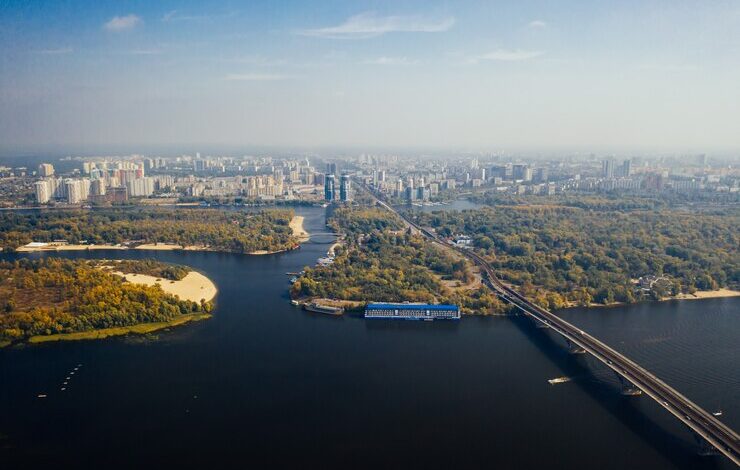Mumbai Lake Levels: A Comprehensive Insight into Water Management and Environmental Sustainability

Mumbai, often referred to as the financial capital of India, is a city that never sleeps. Its vibrant culture, bustling streets, and iconic skyline mask an intricate system of natural resources, particularly its lakes, which play a crucial role in the city’s water supply and ecological balance. This article will explore the significance of Mumbai’s lake levels, their seasonal fluctuations, challenges faced, and the strategies for sustainable management.
The Role of Lakes in Mumbai’s Water Supply
mumbai lake levels are essential for providing fresh water to its residents. The city relies on a combination of lakes and reservoirs, which contribute approximately 4,500 million liters of water daily. This water not only serves the domestic needs of the population but also supports industrial activities and the growing agricultural sector in the surrounding areas.
Key Lakes in Mumbai
- Upper Vaitarna Lake: Located in the northern part of Mumbai, Upper Vaitarna is one of the primary sources of drinking water. Its catchment area is vital for replenishing the lake, making it crucial for long-term water sustainability.
- Bhatsa Lake: Situated in the Thane district, Bhatsa Lake is the largest reservoir supplying water to Mumbai. It is a key player in the city’s water management system and is closely monitored to ensure optimal levels throughout the year.
- Tulsi Lake: Nestled within the Sanjay Gandhi National Park, Tulsi Lake not only supplies drinking water but also serves as a recreational area. Its proximity to nature makes it a popular spot for residents looking to escape the city’s hustle and bustle.
- Powai Lake: This man-made reservoir, originally created in the 19th century, is not only a water source but also a picturesque locale that attracts tourists and locals alike. Powai Lake plays a smaller but significant role in the overall water supply.
- Versova Lake: Known for its biodiversity, Versova Lake supports various bird species and serves as an essential habitat. It highlights the need for conservation efforts in urban water bodies.
Seasonal Variations in Lake Levels
Mumbai experiences a tropical climate with distinct wet and dry seasons. These seasonal changes significantly impact lake levels, influencing water availability.
Monsoon Season
The monsoon season, spanning from June to September, is critical for Mumbai’s water supply. During this period, the city receives heavy rainfall, leading to a substantial rise in lake levels. The abundant rainwater replenishes the lakes, ensuring that they are filled to capacity. However, excessive rainfall can lead to overflow, resulting in urban flooding.
The monsoon is not only a boon for water levels but also a challenge for infrastructure. Managing stormwater and preventing flooding in low-lying areas becomes crucial during this time.
Summer Season
As the monsoon recedes, lake levels begin to decline, particularly during the summer months of April to June. This period is marked by rising temperatures and increased water demand. With the city’s population continuously growing, the strain on water resources becomes evident.
To manage the decreasing lake levels, municipal authorities often implement water rationing measures. Residents may experience restrictions on water usage, highlighting the need for efficient management strategies.
Winter Season
In winter, lake levels tend to stabilize but require continuous monitoring. While the demand decreases during this season, it is essential to prepare for the subsequent monsoon. Maintaining optimal lake levels is crucial for ensuring a consistent water supply throughout the year.
Challenges Facing mumbai lake levels
Despite their significance, Mumbai’s lakes face numerous challenges that threaten their sustainability and functionality.
Urbanization and Encroachment
Rapid urbanization has led to the encroachment of lake areas, reducing their catchment regions. Construction activities in and around these water bodies disrupt the natural drainage systems, which can lead to decreased water levels and increased flooding risks.
Pollution
Industrial and domestic waste pollution is a significant threat to Mumbai’s lakes. Contaminants can drastically affect water quality, posing health risks to residents and endangering aquatic ecosystems. The lack of effective waste management systems exacerbates this issue.
Climate Change
Climate change is causing erratic weather patterns, impacting rainfall distribution and intensity. Unpredictable monsoons can lead to severe flooding or droughts, challenging Mumbai’s water management systems. Adapting to these changes is essential for sustainable water management.
Over-extraction of Water
With a growing population, the demand for water continues to rise. Over-extraction from lakes and reservoirs can lead to depleted levels, making it challenging to meet the city’s needs. Balancing water demand with sustainable practices is crucial for long-term viability.
Strategies for Sustainable Management of Lake Levels
To address the challenges facing Mumbai’s lake levels, a multifaceted approach to water management is essential. Here are some strategies that can help:
Integrated Water Resource Management (IWRM)
Implementing an IWRM framework allows for a holistic approach to water management. This strategy promotes collaboration among stakeholders, including government agencies, local communities, and environmental organizations, to develop effective water management policies.
Rainwater Harvesting
Promoting rainwater harvesting at both residential and commercial levels can significantly alleviate pressure on Mumbai’s lakes. By capturing and storing rainwater, residents can reduce their reliance on municipal supplies, particularly during the dry months.
Pollution Control Measures
Strengthening regulations to prevent industrial and domestic waste from contaminating lakes is crucial. Implementing strict waste management practices and promoting community awareness can help preserve the quality of these vital water sources.
Restoration Projects
Restoring degraded lake areas is essential for enhancing their ecological integrity. Initiatives aimed at reforestation, wetland restoration, and habitat conservation can significantly improve the health and functionality of these water bodies.
Public Awareness Campaigns
Educating the public about the importance of lake conservation and sustainable water use is vital. Awareness campaigns can empower residents to take action, whether through conservation efforts or participation in local governance.
The Future of mumbai lake levels
The future of Mumbai’s lakes hinges on the effective implementation of sustainable practices and proactive management strategies. As the city grapples with the challenges of urbanization and climate change, prioritizing the health of its water bodies will be essential for ensuring a reliable water supply.

Community Involvement
Community involvement plays a crucial role in the conservation of lakes. Local organizations, schools, and residents can collaborate on clean-up drives, awareness campaigns, and restoration projects. Fostering a sense of ownership and responsibility towards local water bodies can drive positive change.
Technological Innovations
Utilizing technology for monitoring and managing lake levels can enhance efficiency. Implementing sensor-based systems for real-time data collection on water quality and levels can aid authorities in making informed decisions regarding water management.
Policy Reforms
Policymakers must prioritize the protection and conservation of lakes in urban planning. Incorporating sustainable practices into development projects can minimize environmental impact and ensure that natural resources are preserved for future generations.
Conclusion
mumbai lake levels are not merely water bodies; they are lifelines that sustain the city’s population and biodiversity. As urban pressures mount, understanding and managing lake levels becomes increasingly critical. Through a combination of community involvement, innovative technologies, and effective policy reforms, Mumbai can ensure the sustainability of its lakes and, by extension, the well-being of its residents.
As citizens of this vibrant city, we all share the responsibility of preserving our natural resources. By advocating for sustainable practices and engaging in conservation efforts, we can work together to secure a brighter future for Mumbai’s lakes and the countless lives they support.



